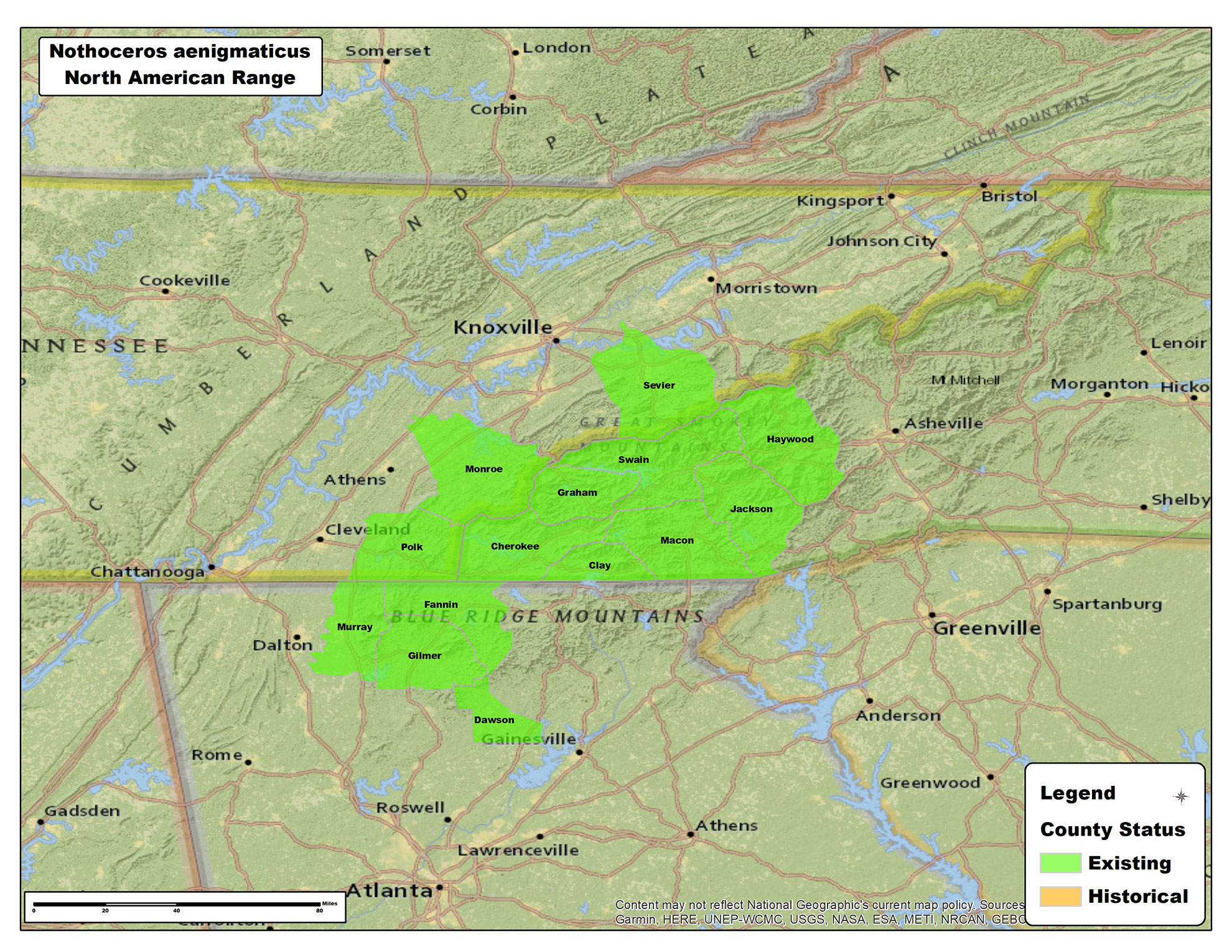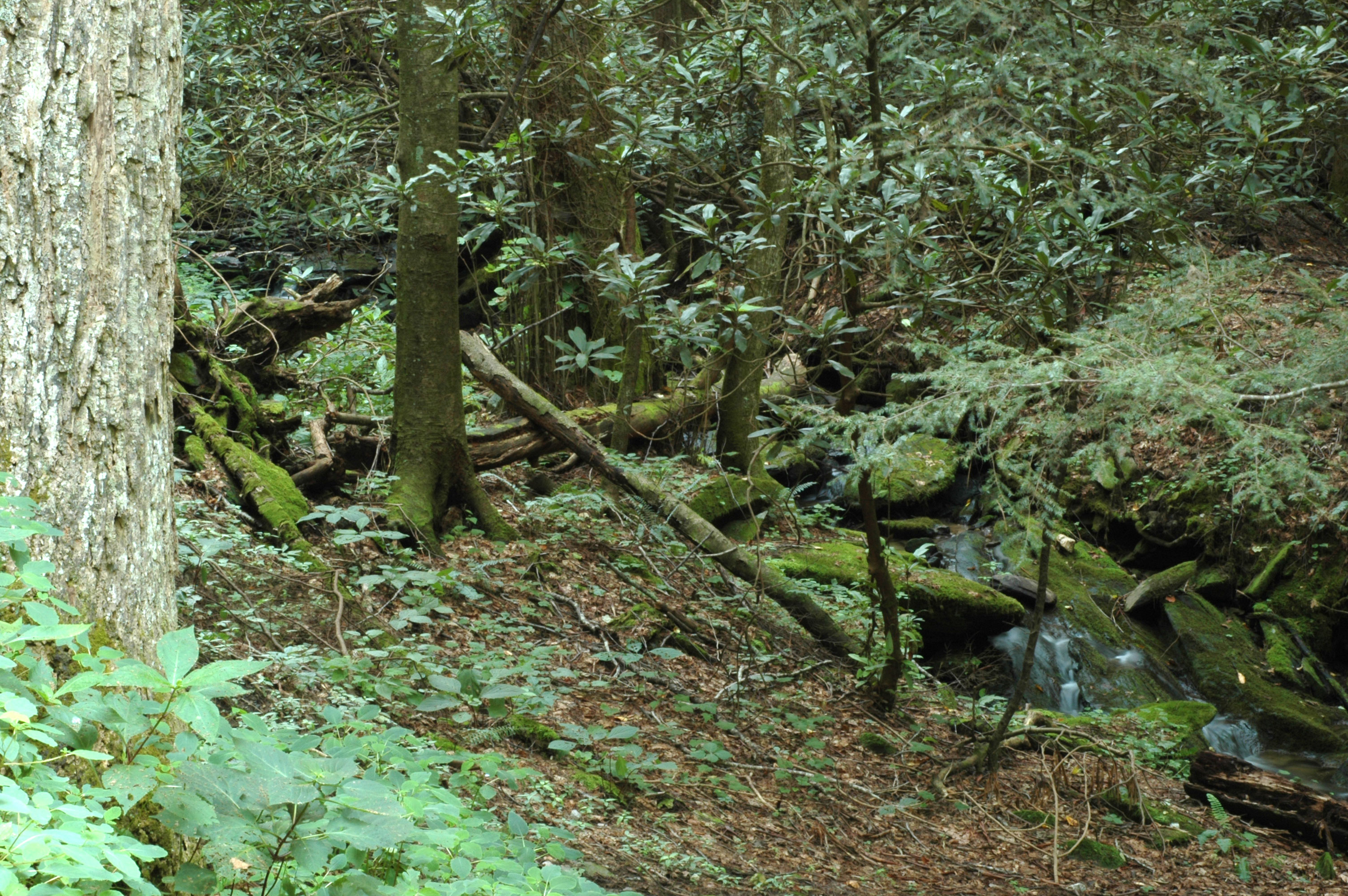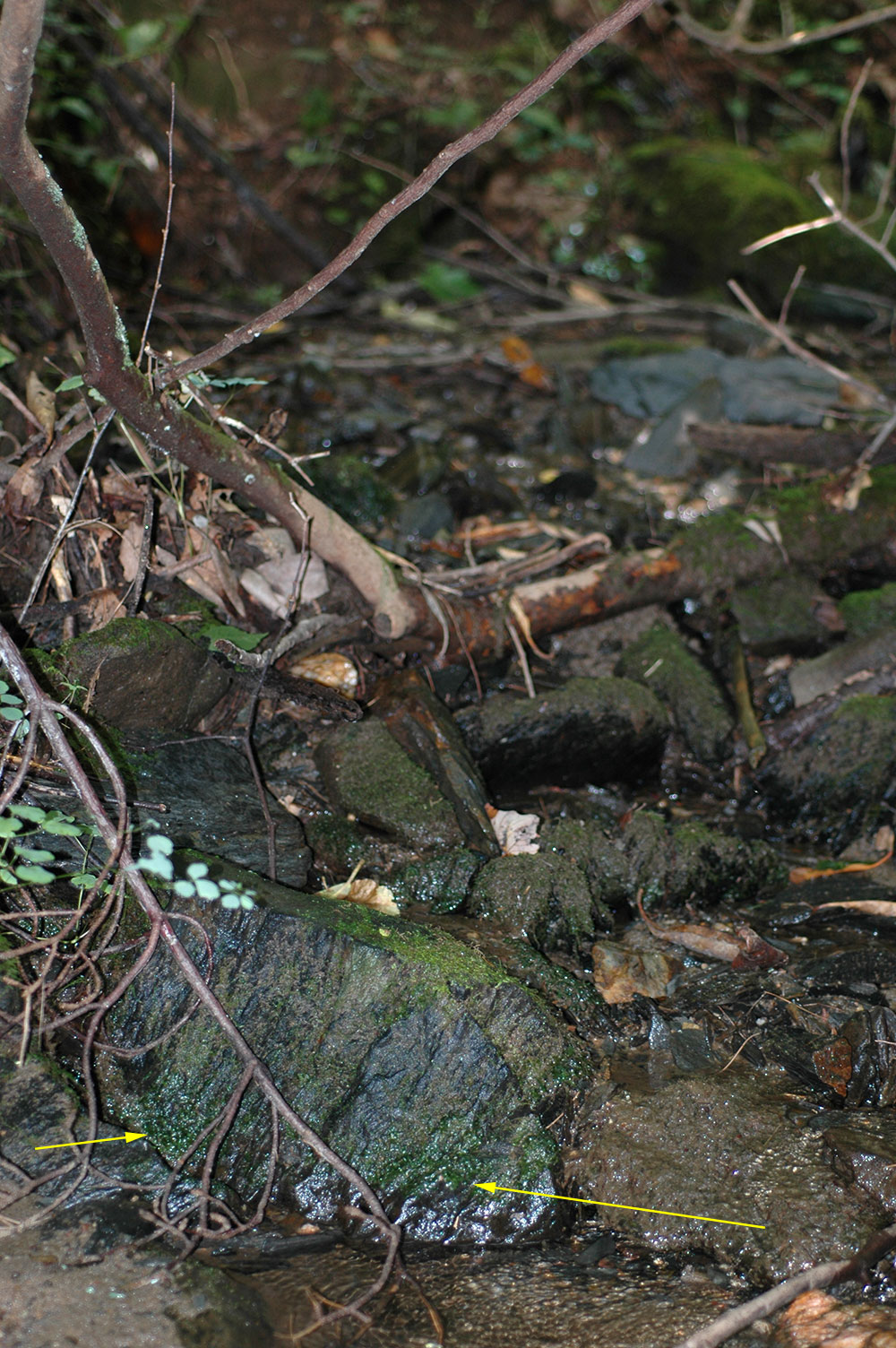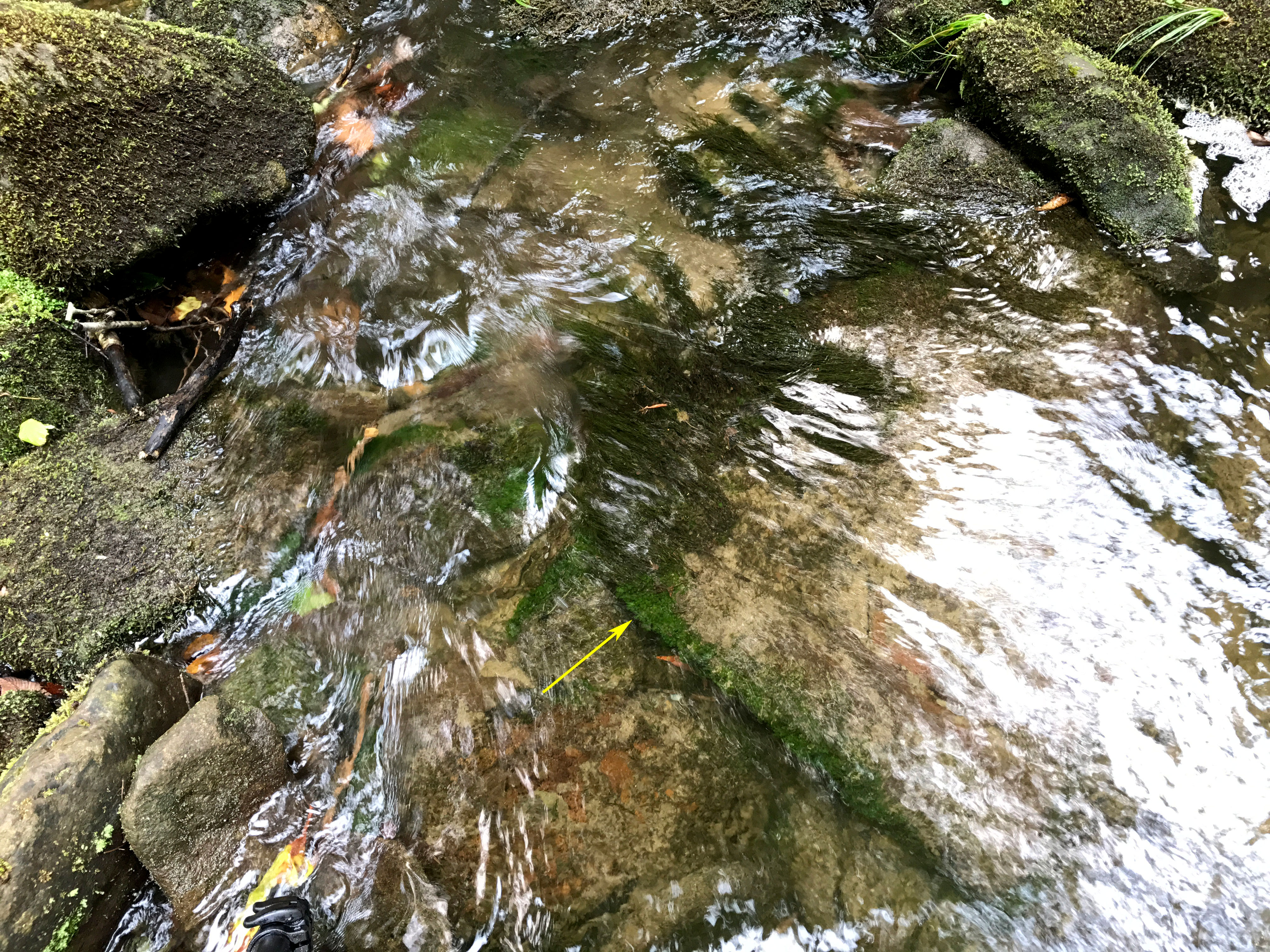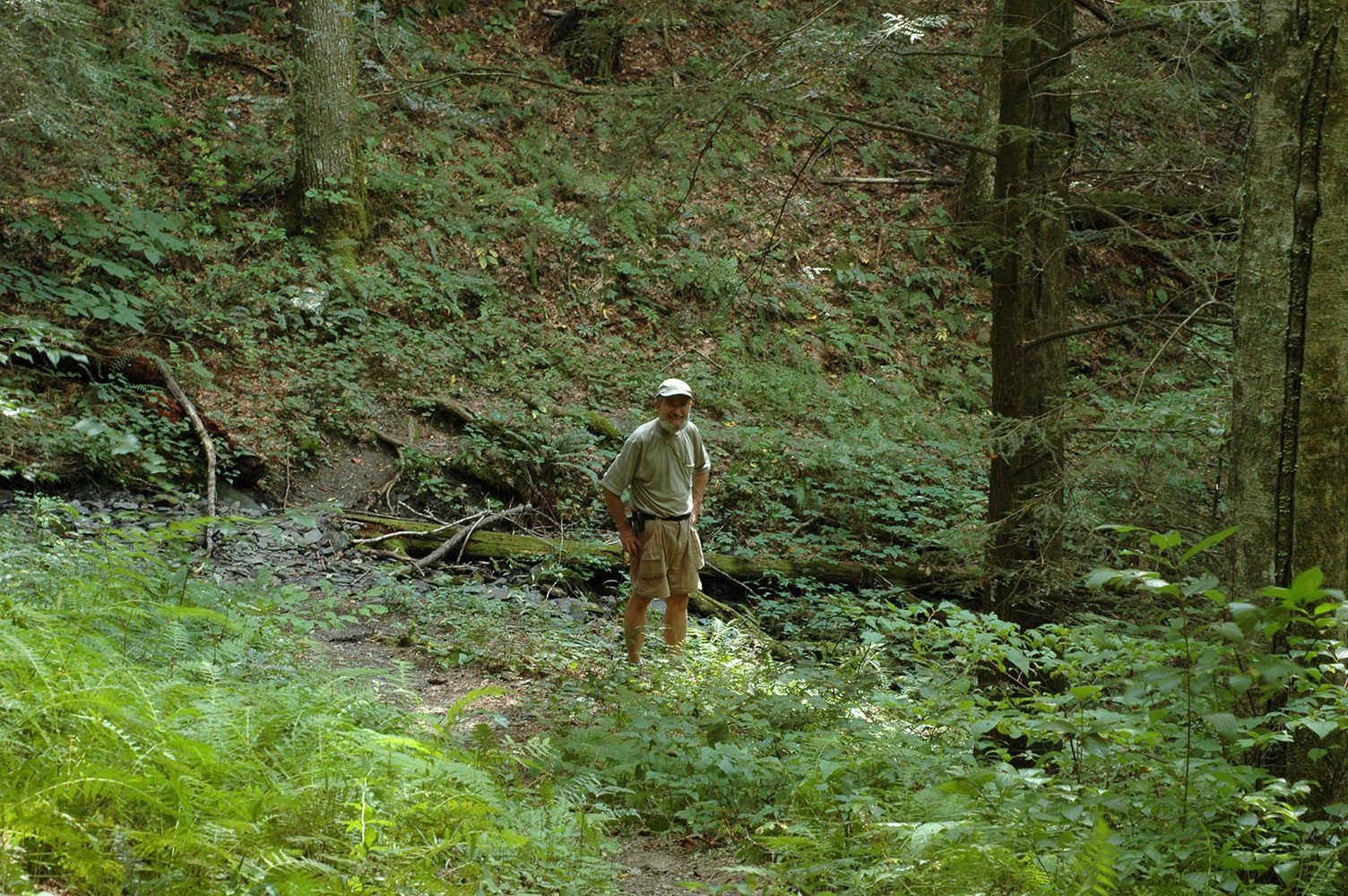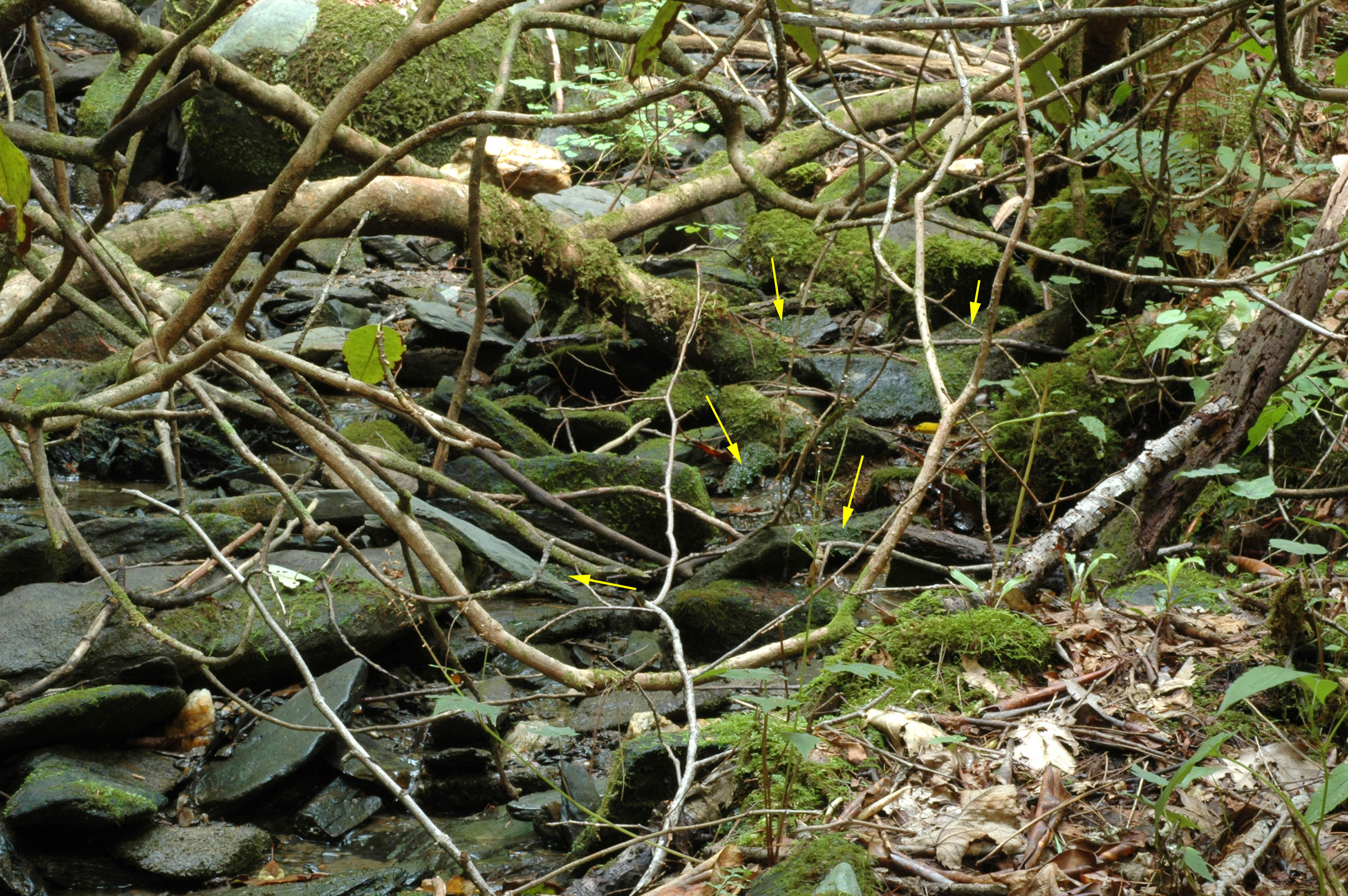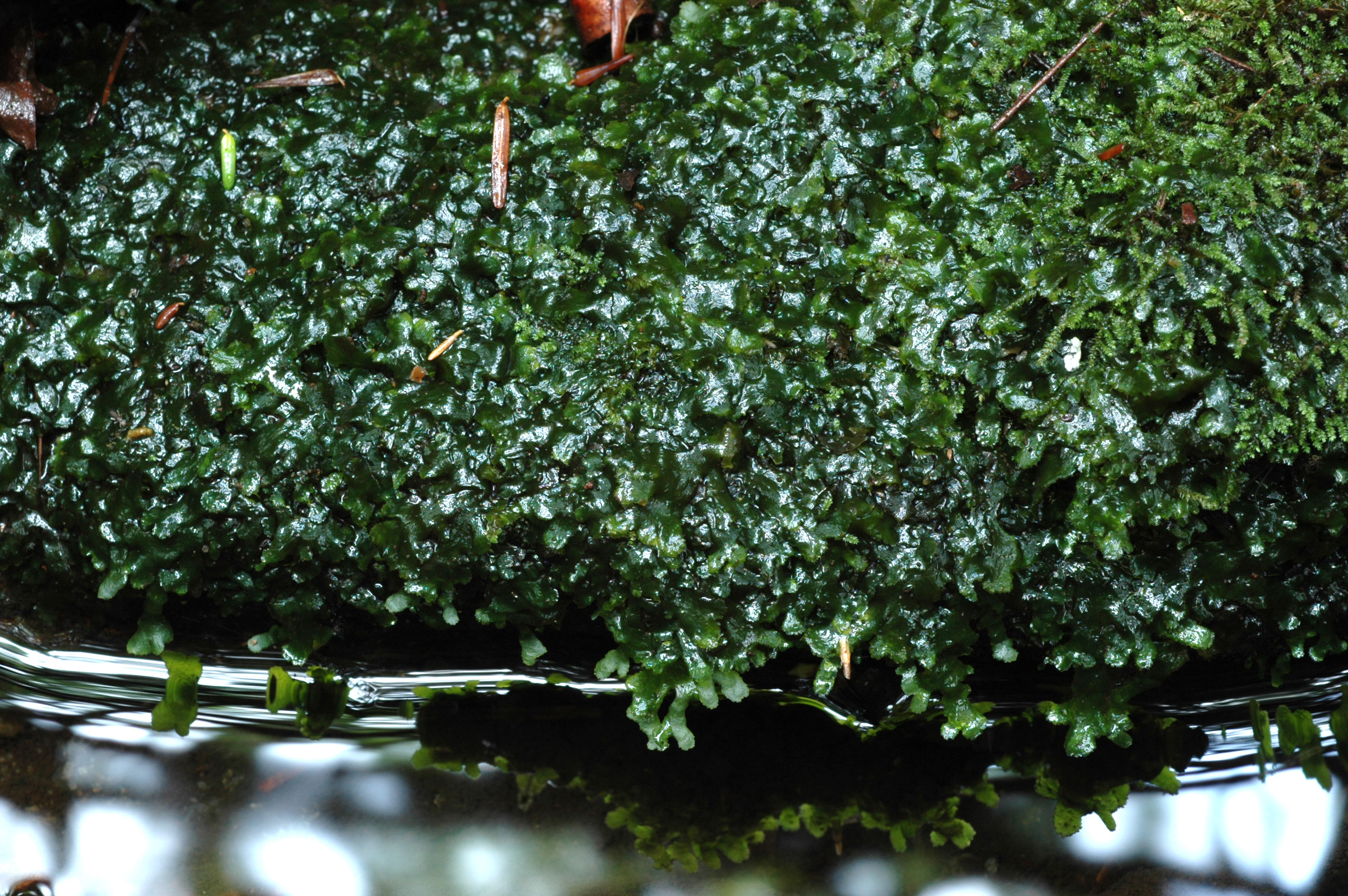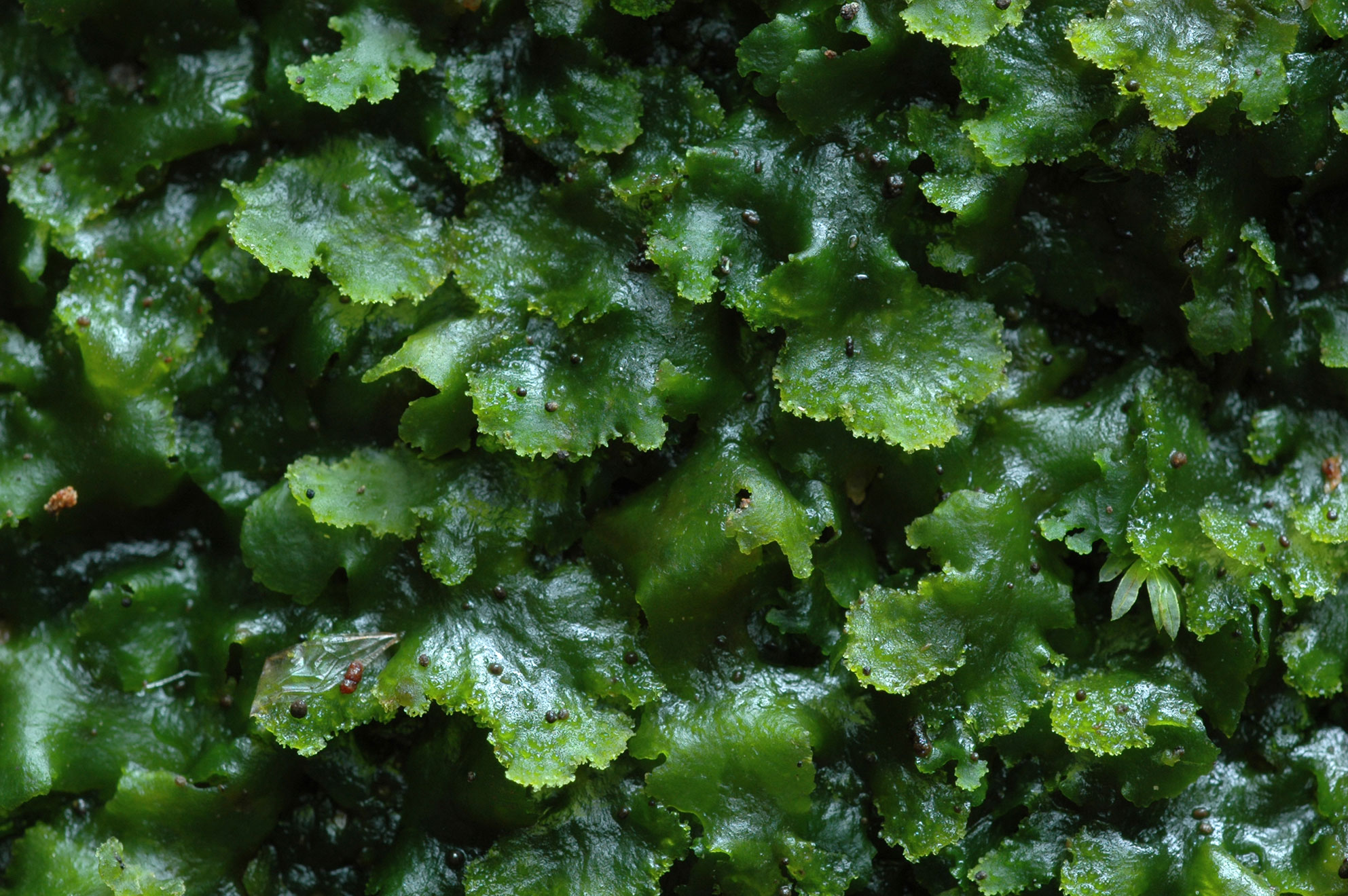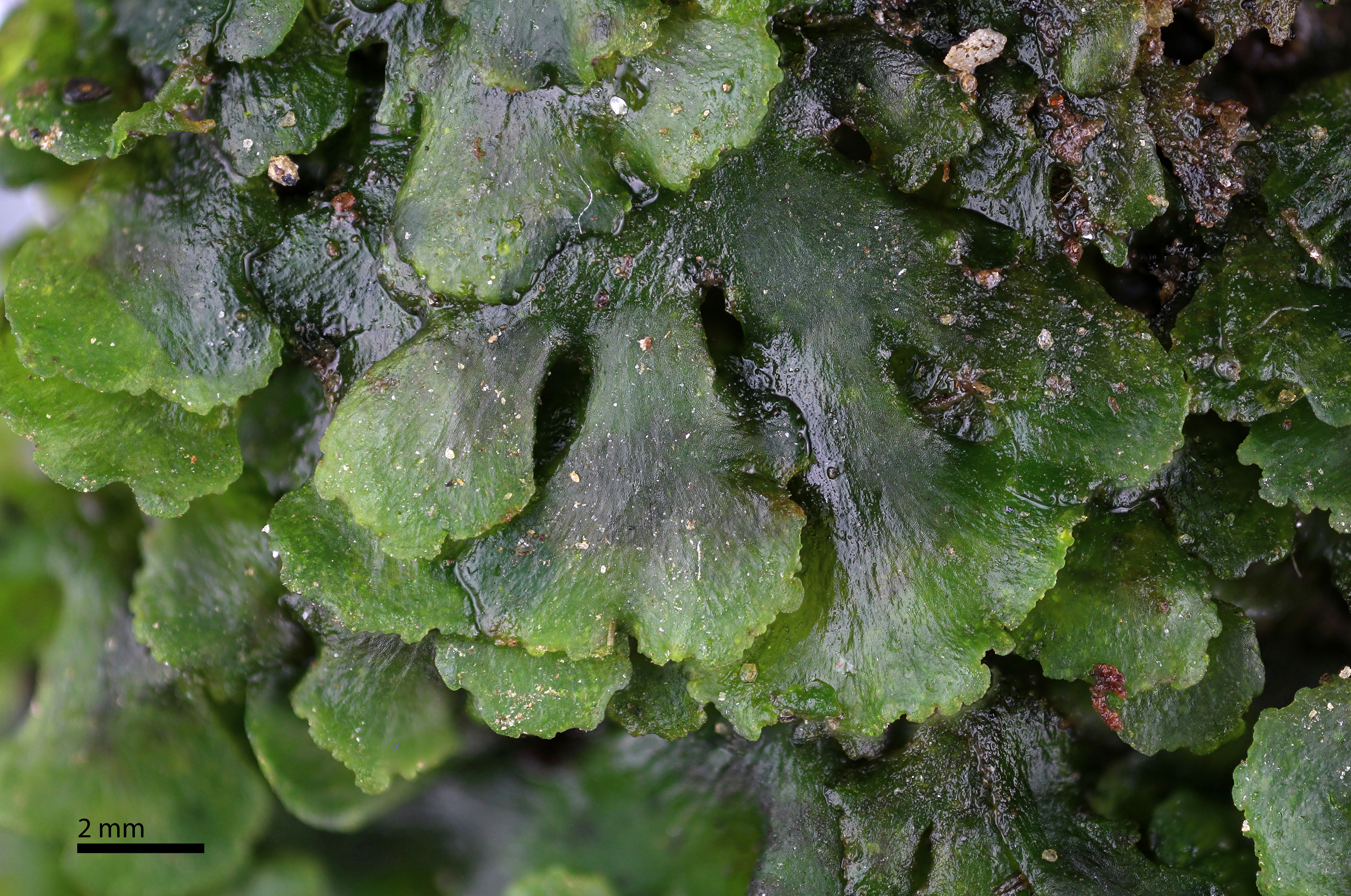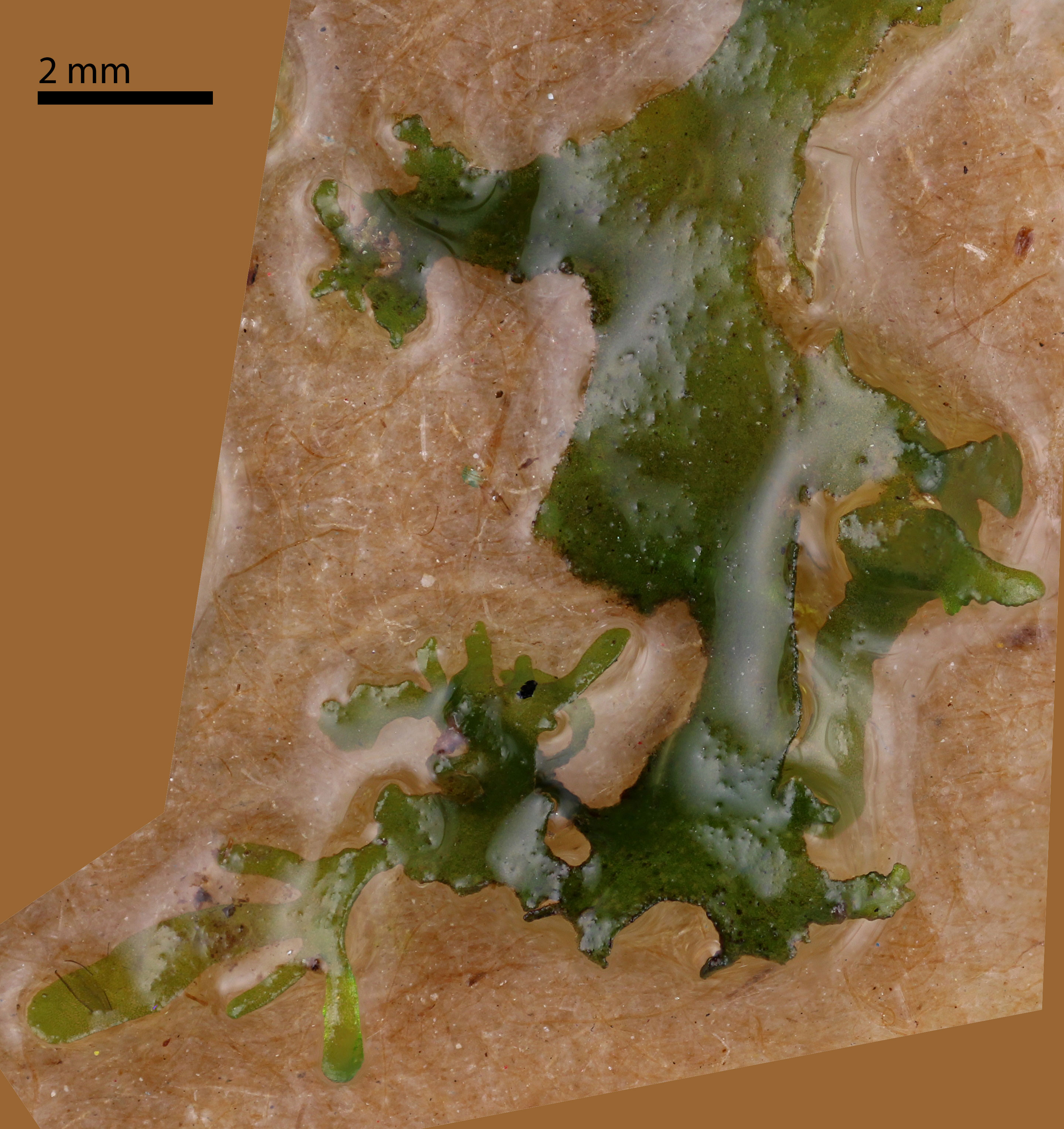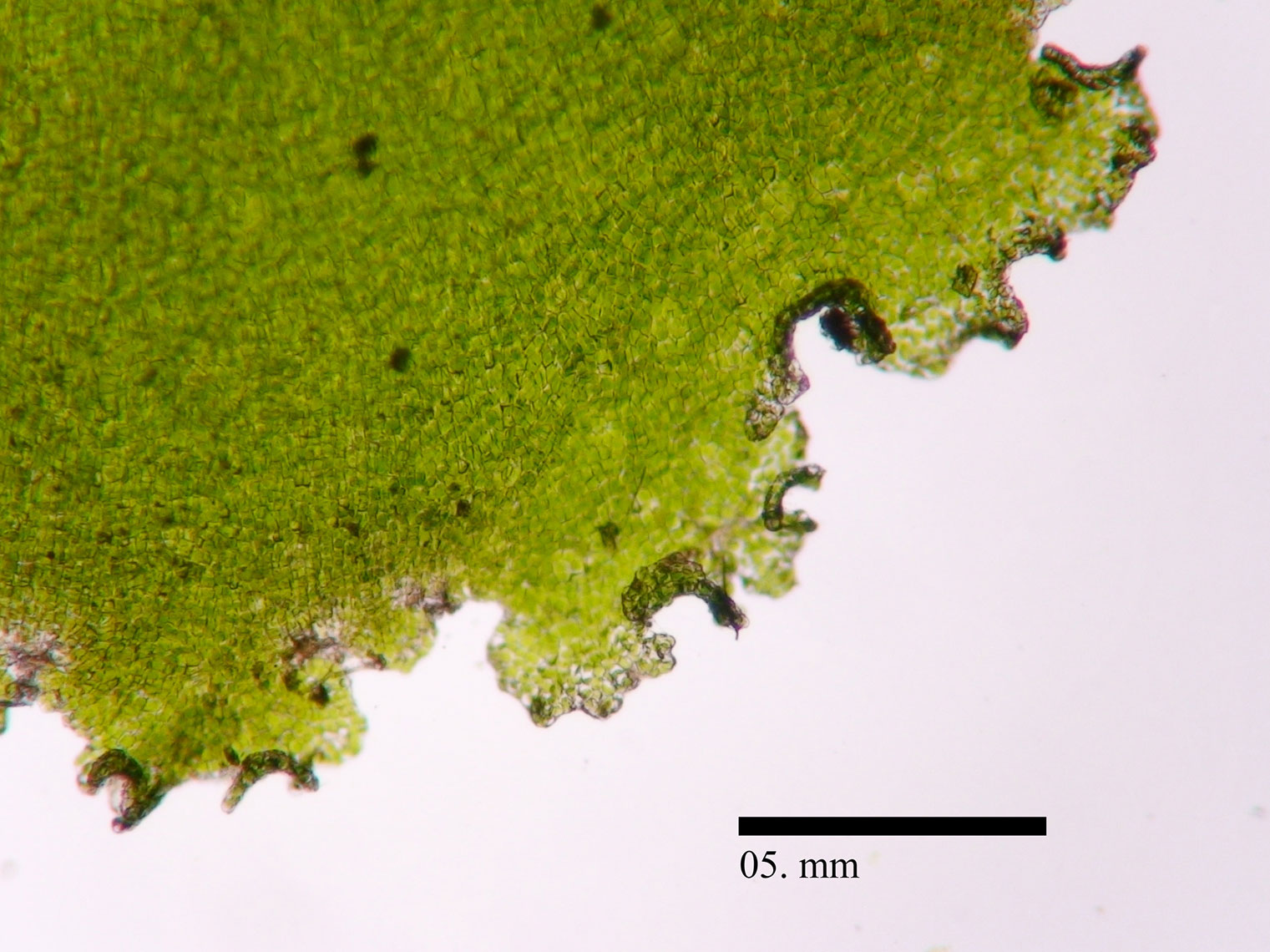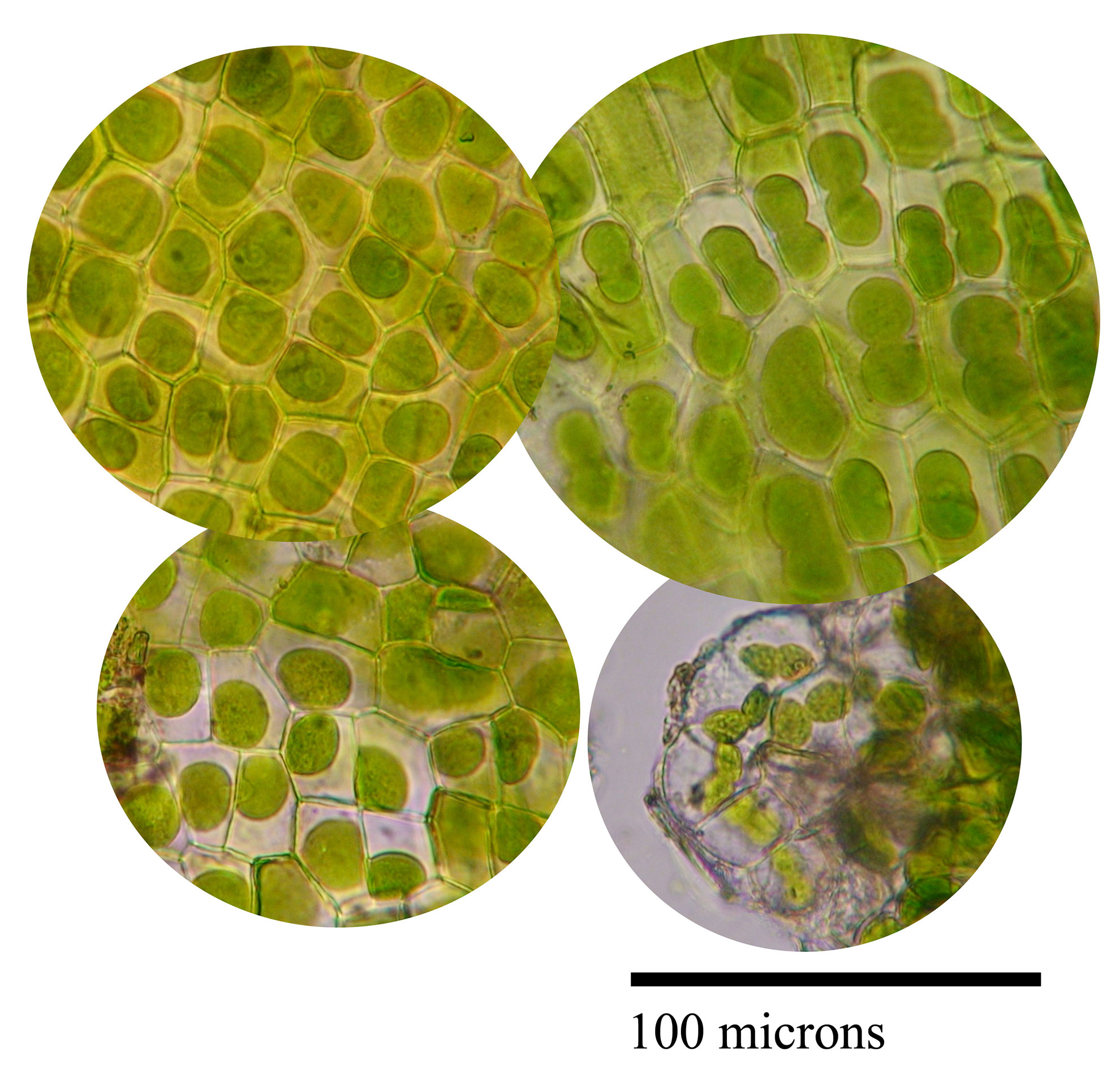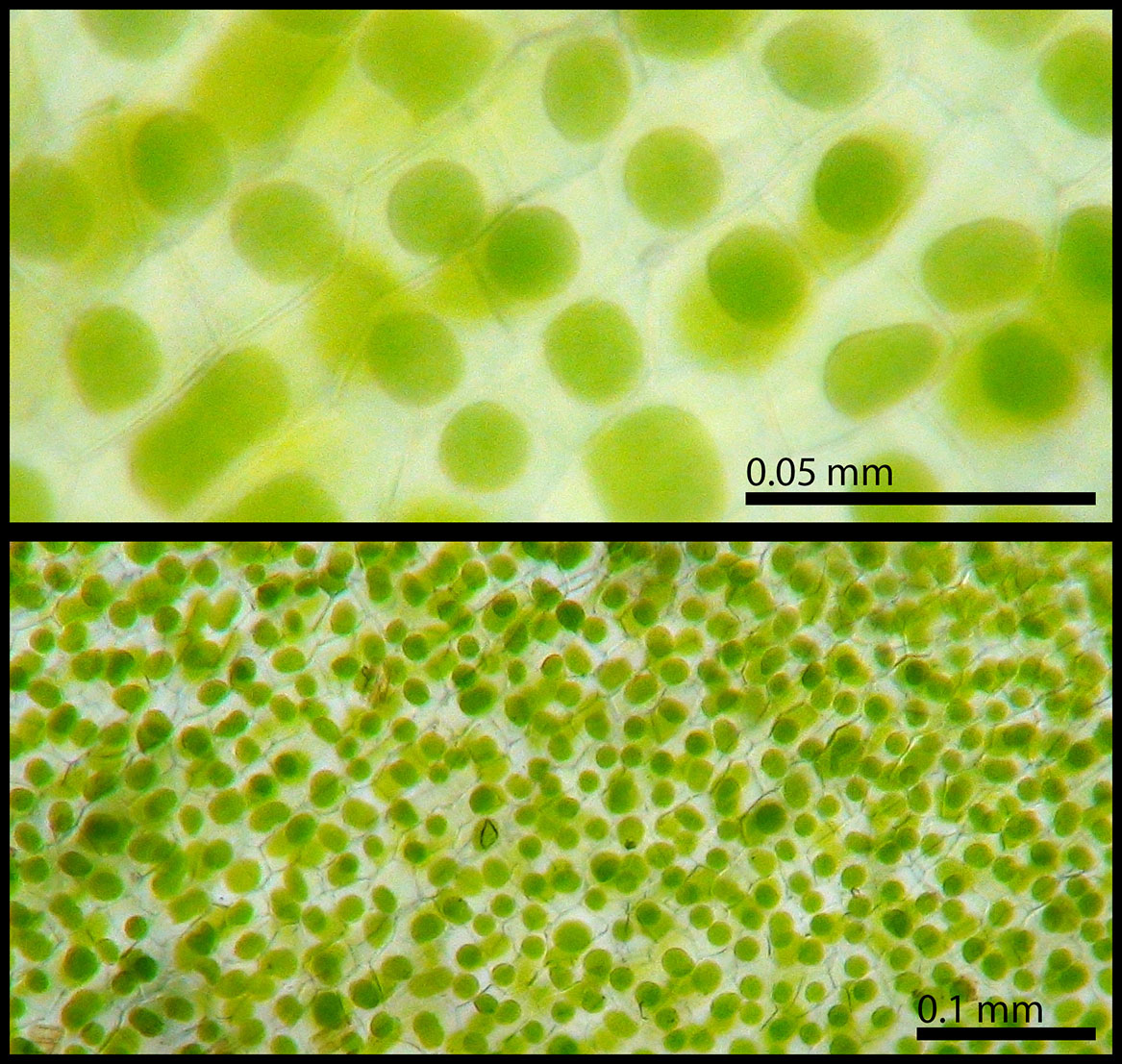Nothoceros aenigmaticus J. C. Villarreal & K. D. McFarland
Family: Dendrocerotaceae
Synonyms
Megaceros aenigmaticus R.M. Schuster (1992a), nomen invalidum according to Söderström et al. (2016)
NatureServe Conservation Status
G3
Distribution
North America. U.S.A. (Georgia, North Carolina, Tennessee). Mexico. Central America. (Costa Rica). South America. (Colombia, Venezuela, Bolivia). Villarreal and Renner 2014; Gradstein et al. 2016.
Habitat
Regionally, acidic cove forests, growing over rock in shaded streams and seeps often overhung with Rhododendron maximum; over stones in low gradient streambeds where water percolates slowly and over rocks in high gradient streams where plants may be submerged under rushing water. Also growing upon wet woody debris. Moderate elevations (1100 – 4000 ft).
Brief Description and Tips for Identification
Plant thalloid, lacking stems and leaves, deep green, forming large mats, individual thalli up to 3 to 4.5 mm wide, often smaller. Thalli branched, irregularly pinnate. Thallus margins entire or crispulate bearing small, semicircular, unistratose frilly lobes, or entire. Epidermal cells containing one large chloroplast, some epidermal cells may have 2-3 chloroplasts, interior cells with 2-5 chloroplasts. All cells lacking oil boides.
Dioicous. Male plants apparently do not produce viable sperm in the Southern Appalachians (Renzaglia and McFarland 1999). Sporophytes unknown. Probably reproducing by fragmentation (Schuster 1992b).
Similar to other hornworts in the deep green color of the thallus; however, N. aenigmaticus does not form rosettes as typical of other regional hornworts. N. aenigmaticus is similar to other regional hornworts, as seen in cursory examination, by the large single chloroplast in each dermal cell. That only one chloroplast may be found in each mature vegetative cell separates hornworts from thalloid liverworts of green color (e.g. Aneura, Dumortiera, Riccardia, Pellia, Pallavicinia) that may occur along streams and seeps, i.e. habitats to which N. aenigmaticus is restricted. With further cytological study, N. aenigmaticus is distinguished from other regional hornworts (Anthoceros, Notothylas, and Phaeoceros) in possessing several chloroplasts, 2-4 or more in the cells below the dermal layer, i.e. internal cells. Other regional hornworts consistently possess a single chloroplast in both dermal and internal cells.
When abundant, one of the least difficult bryophytes to identify in the field.
Salient Features
- Restricted to the channels and wet margins of mountain streams and seeps.
- Mat forming thalli deep green.
- Chloroplasts numbering 1 (1-3) in epidermal cells, 2-5 in interior cells.
References
Gradstein, R., Morales, C., Negritto, M. A., and Duckett, J. G. 2016. New records of liverworts and hornworts from the Sierra Nevada de Santa Marta, Colombia. Cryptogamie, Bryologie.
Hyatt, P.E. 2006. Noteworthy Collections. Georgia. Castanea 71:178.
Renzaglia, K. S., and McFarland, K. D. 1999. Antheridial plants of Megaceros aenigmaticus in the southern Appalachians: anatomy, ultrastructure and population distribution. Haussknechtia Beiheft, 9, 307-316.
Schuster, R.M. 1992a. The Hepaticae and Anthocerotae of North America East of the Hundredth Meridian. Volume VI. Field Museum of Natural History, Chicago.
Schuster, R. M. 1992b. On Megaceros aenigmaticus Schust. Bryologist, 305-315.
Söderström, L., Hagborg, A., von Konrat, M., Bartholomew-Began, S., Bell, D., Briscoe, L., ... and Cooper, E. D. 2016. World checklist of hornworts and liverworts. PhytoKeys, 59(1–2): 1–828.
Villarreal, A., Carlos, J., Campos, S., Victoria, L., and Goffinet, B. 2012. Parallel Evolution of Endospory within Hornworts: Nothoceros renzagliensis (Dendrocerotaceae), sp. nov. Systematic botany, 37(1), 31-37.
Villarreal, J. C., and Renner, S. S. 2014. A review of molecular-clock calibrations and substitution rates in liverworts, mosses, and hornworts, and a timeframe for a taxonomically cleaned-up genus Nothoceros. Molecular phylogenetics and evolution, 78, 25-35.
Acknowledgment
Some text and images on this page were originally prepared for the Georgia Department of Natural Resources in 2010, contract number 605-090427 with Paul G. Davison and used here with permission.
